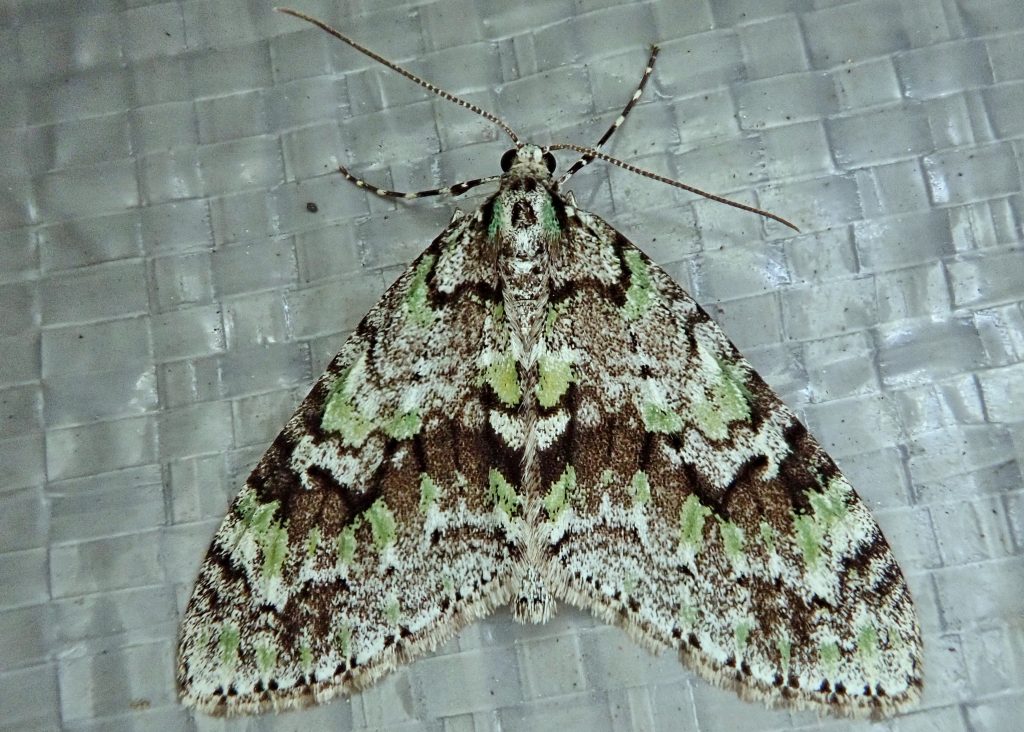
This highly variable Geometer carries the prosaic but descriptive common names mottled grey carpet moth and yellow-lined forest looper. It can be strikingly handsome, with contrasting colors and bold patterns, and it can also be fairly blasé in maculation. But my aesthetic opinion does not matter, and I’m sure all of the variations are good camouflage. They are common in forested areas throughout our region.
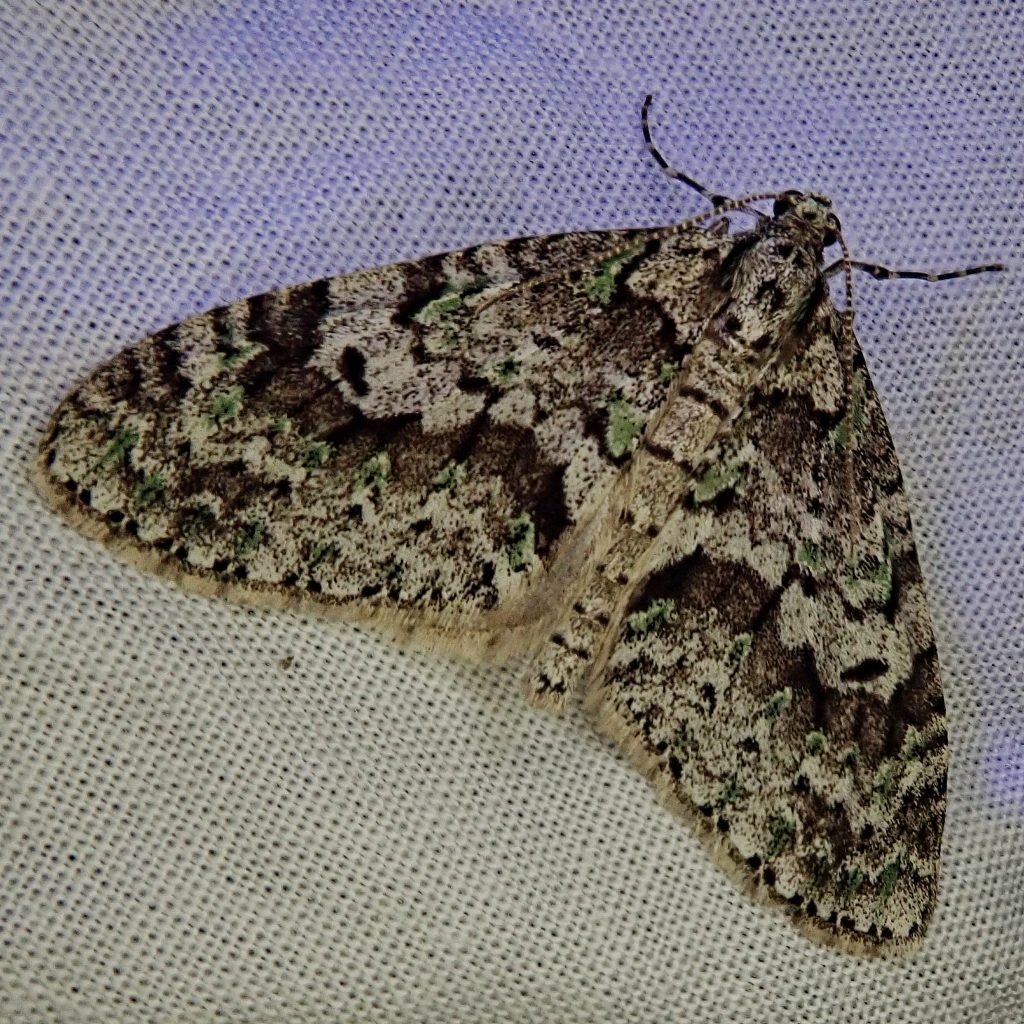
The first time I found this species was early in my mothing career, and up until that point I had been blessed by calm winds. As I spotted one of these on the floor of my moth tent a gust of wind flipped the unanchored structure over. For a frenzied minute or so I was very occupied with making sure my light didn’t break, and weighting down the tent.
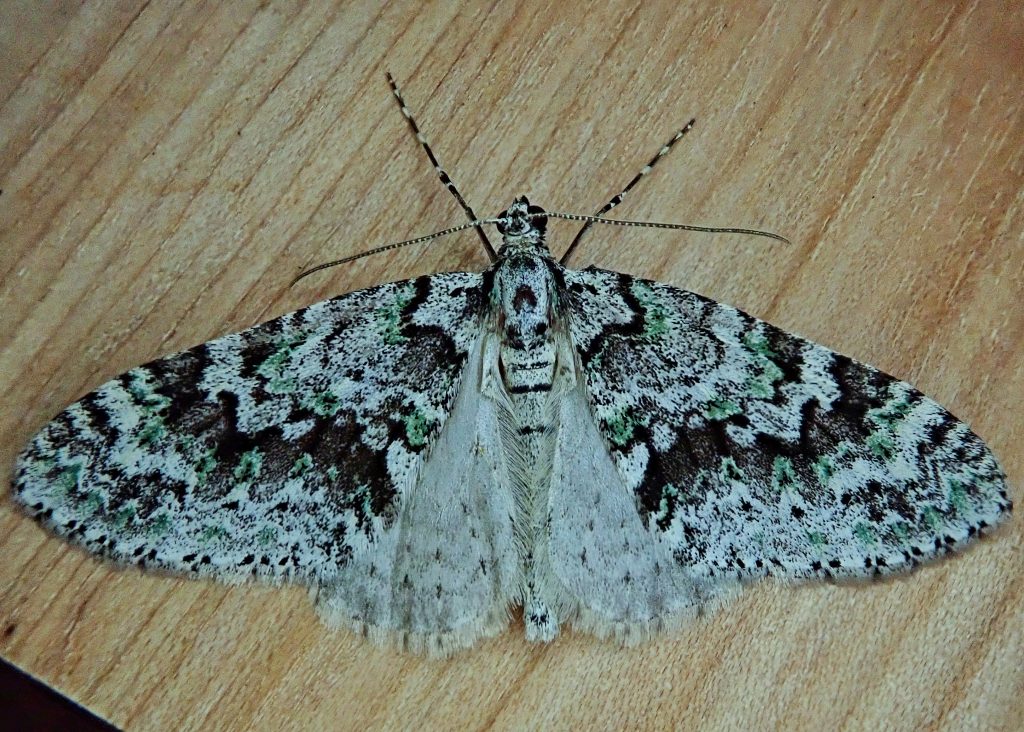
When I finally got things settled, there was one of these guys, perched right where I’d seen it before. Since that night I’ve also seen quite a few of these moths in the daytime, in the shaded nooks of porches, outbuildings and rest areas. They seem to be a pretty calm species.
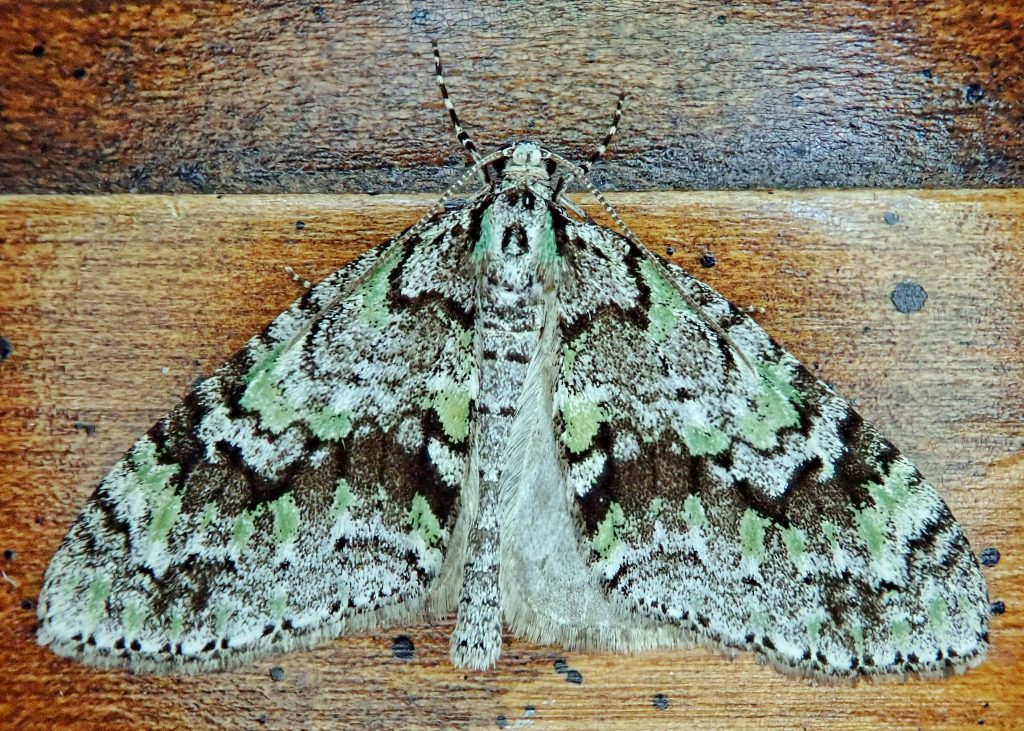
Description– Medium sized (fw length 14-17mm) grey, brown, green, and white banded geometer (forewing is highly variable and may occasionally just be shades of light and dark grey) which usually has an irregular, jagged, curving medial band of dark grey or brown, bordered by varying amounts of green, a black discal bar, and a right angled red to dark grey line near the wing base; forewing has a rounded apex; hindwing light grey with dots along the veins; abdomen has thin, dark, horizontal bands;
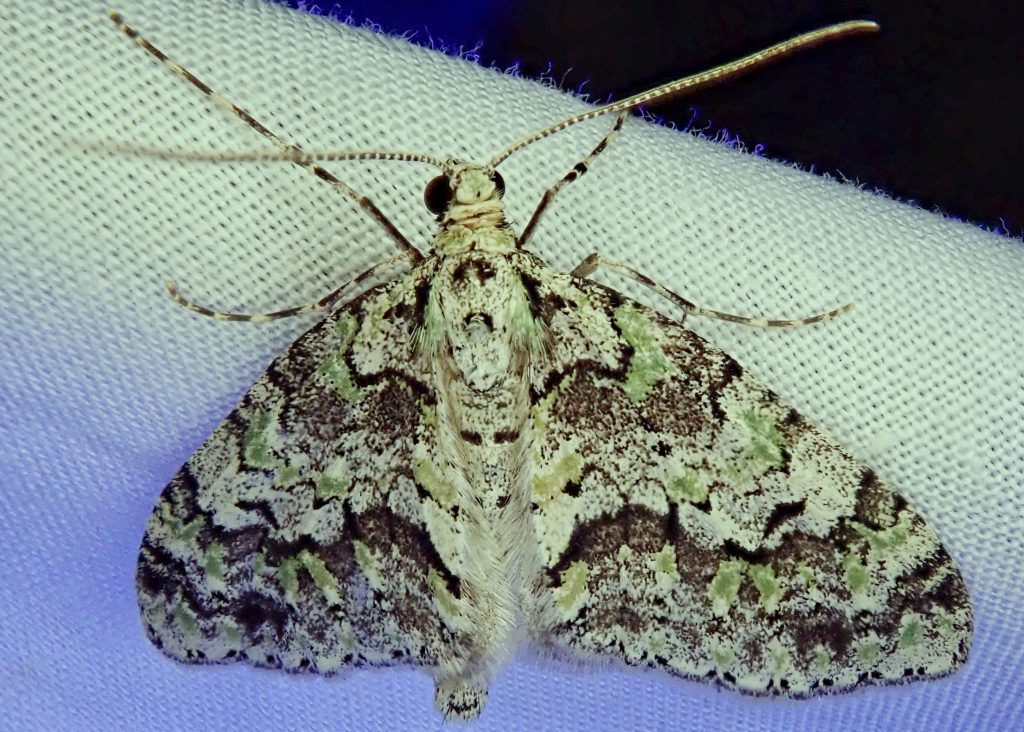
Similar species–C. atroliturata has white or ground color in medial band, with many distinct, dark transverse lines.
Habitat– Moist to dry forested areas
Range-North America; region wide in appropriate habitat se
Eats-Larval hosts are primarily a variety of conifers, but they are also known to feed on plants in Rosaceae, Salicaceae (willows) and Ericaceae (heaths).
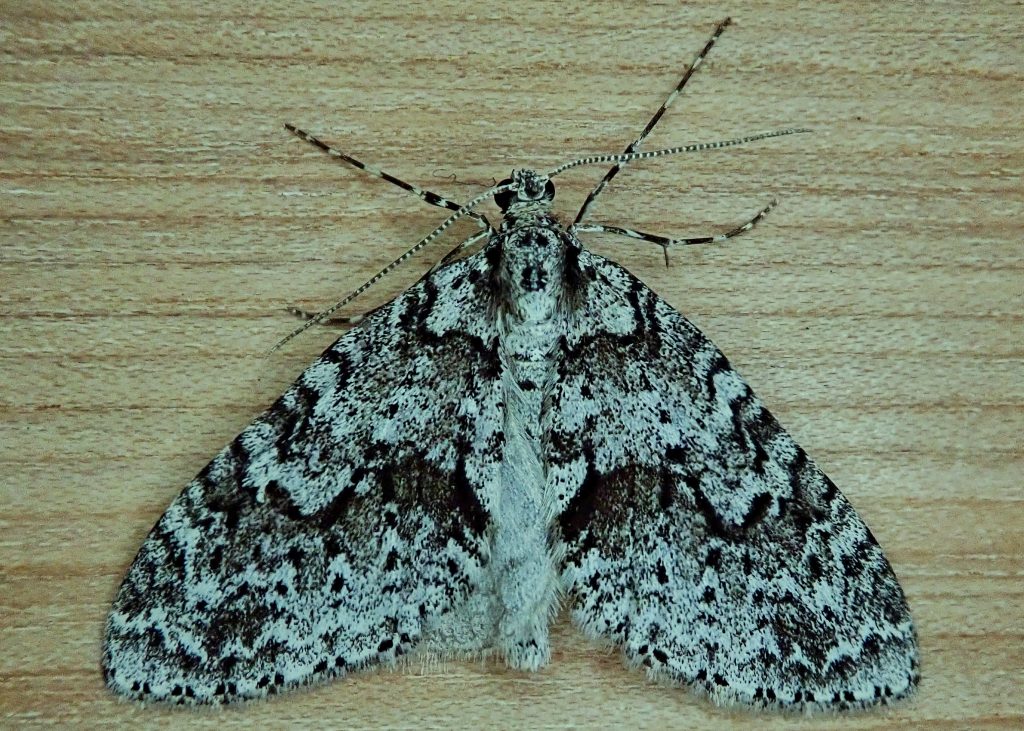
Reproduction-Univoltine; eggs are laid in the spring on foliage of the host plant; caterpillars are grainy green with a yellow side stripe and a green head; overwinters in pupal diapause.
Adults active– April to June
Etymology of names– Cladara may be from the Greek for ‘frail, easily broken’, but GD Hulst gives no reasoning behind this appellation. The specific epithet limitaria may be from the Latin for ‘on the border’, but again, I can not ascertain what this references.
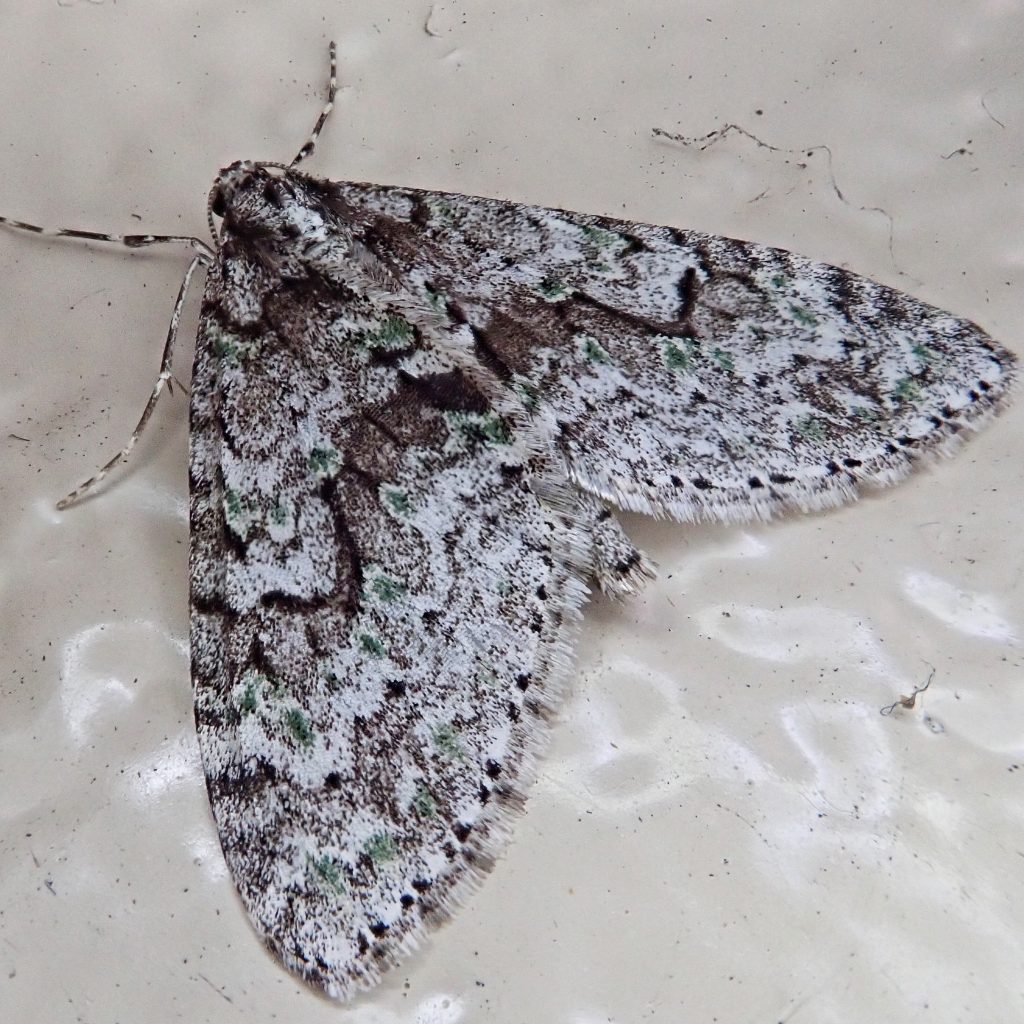
https://bugguide.net/node/view/13449
https://www.insectidentification.org/insect-description.php?identification=Mottled-Gray-Carpet-Moth
http://mothphotographersgroup.msstate.edu/species.php?hodges=7637
https://www.butterfliesandmoths.org/species/Cladara-limitaria
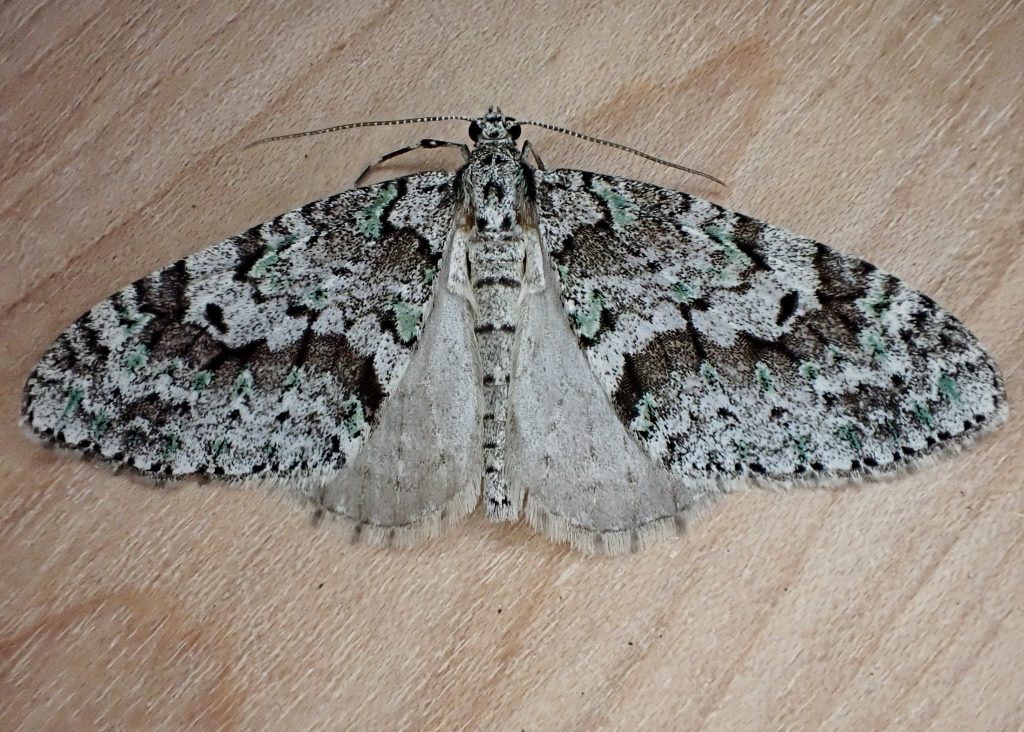
Currently the most numerous and equally variable species on my moth sheets here in the Maritime Spruce-Fir Forest on the coast of Maine.
That interesting Ken! Thanks for telling me.
Enjoyed hearing about this pretty little moth. Thank you! ☺️